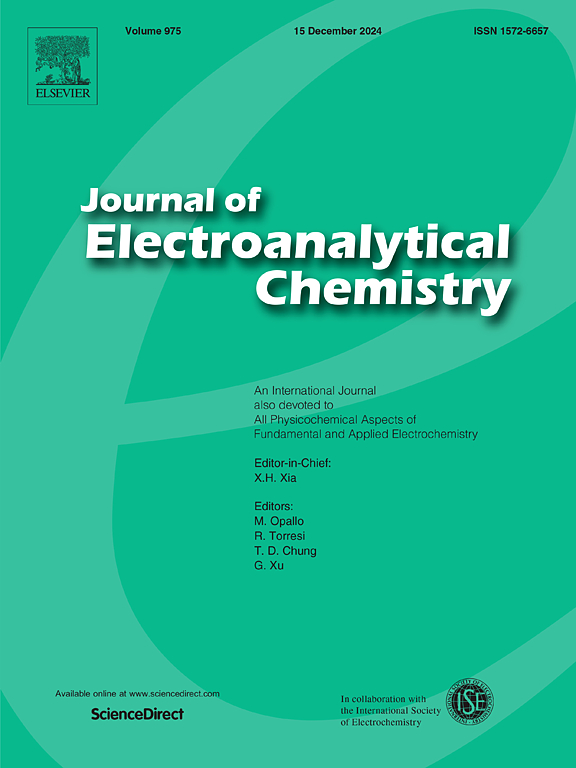Synergistic effect of Nitrogen and Boron co-doped porous actived carbon encapsulated NiCo2O4 nanosphere composite for enhanced Oxygen Eevolution Reaction
IF 4.1
3区 化学
Q1 CHEMISTRY, ANALYTICAL
引用次数: 0
Abstract
There is a growing interest in developing highly efficient, cost-effective, and noble metal-free electrocatalysts. In this study, we synthesized porous activated carbon (AC) derived from waste Agathis dammar cone biomass, co-doped with nitrogen (N) and boron (B), and encapsulated with NiCo₂O₄ nanosphere composites using simple hydrothermal and pyrolysis methods. Characterization results reveal that the incorporation of N and B atoms into the AC lattice significantly enhances the material's surface and electronic structure, improving electron conductivity and increasing the number of active sites. The porous nature of the AC, combined with the synergistic effect of the NiCo₂O₄ binary metal oxide, results in exceptional oxygen evolution reaction (OER) performance, achieving a low overpotential of 289 mV and a small Tafel slope of 84.5 mV dec-1 at 10 mA cm-2 in 1 M KOH alkaline medium. Additionally, the N, B-AC/NiCo₂O₄ electrode exhibits excellent stability, maintaining performance for over 50 h. This work demonstrates a promising strategy for synthesizing efficient, noble metal-free electrocatalysts from waste biomass, offering significant potential for future energy production technologies.

氮硼共掺杂多孔活性炭包封NiCo2O4纳米球复合材料对氧演化反应的协同效应
人们对开发高效、低成本、无贵金属的电催化剂越来越感兴趣。在本研究中,我们采用简单的水热法和热解法合成了多孔活性炭(AC),该活性炭来源于废Agathis dammar cone生物质,共掺杂氮(N)和硼(B),并包被NiCo₂O₄纳米球复合材料。表征结果表明,在AC晶格中加入N和B原子显著增强了材料的表面和电子结构,提高了电子导电性,增加了活性位点的数量。AC的多孔性,加上NiCo₂O₄二元金属氧化物的协同作用,使其具有优异的析氧反应(OER)性能,在1 M KOH碱性介质中,在10 mA cm-2下,过电位低至289 mV, Tafel斜率小至84.5 mV dec1。此外,N, B-AC/NiCo₂O₄电极表现出优异的稳定性,保持性能超过50小时。这项工作展示了一种有前途的策略,可以从废弃生物质中合成高效,无贵金属的电催化剂,为未来的能源生产技术提供了巨大的潜力。
本文章由计算机程序翻译,如有差异,请以英文原文为准。
求助全文
约1分钟内获得全文
求助全文
来源期刊
CiteScore
7.80
自引率
6.70%
发文量
912
审稿时长
2.4 months
期刊介绍:
The Journal of Electroanalytical Chemistry is the foremost international journal devoted to the interdisciplinary subject of electrochemistry in all its aspects, theoretical as well as applied.
Electrochemistry is a wide ranging area that is in a state of continuous evolution. Rather than compiling a long list of topics covered by the Journal, the editors would like to draw particular attention to the key issues of novelty, topicality and quality. Papers should present new and interesting electrochemical science in a way that is accessible to the reader. The presentation and discussion should be at a level that is consistent with the international status of the Journal. Reports describing the application of well-established techniques to problems that are essentially technical will not be accepted. Similarly, papers that report observations but fail to provide adequate interpretation will be rejected by the Editors. Papers dealing with technical electrochemistry should be submitted to other specialist journals unless the authors can show that their work provides substantially new insights into electrochemical processes.

 求助内容:
求助内容: 应助结果提醒方式:
应助结果提醒方式:


